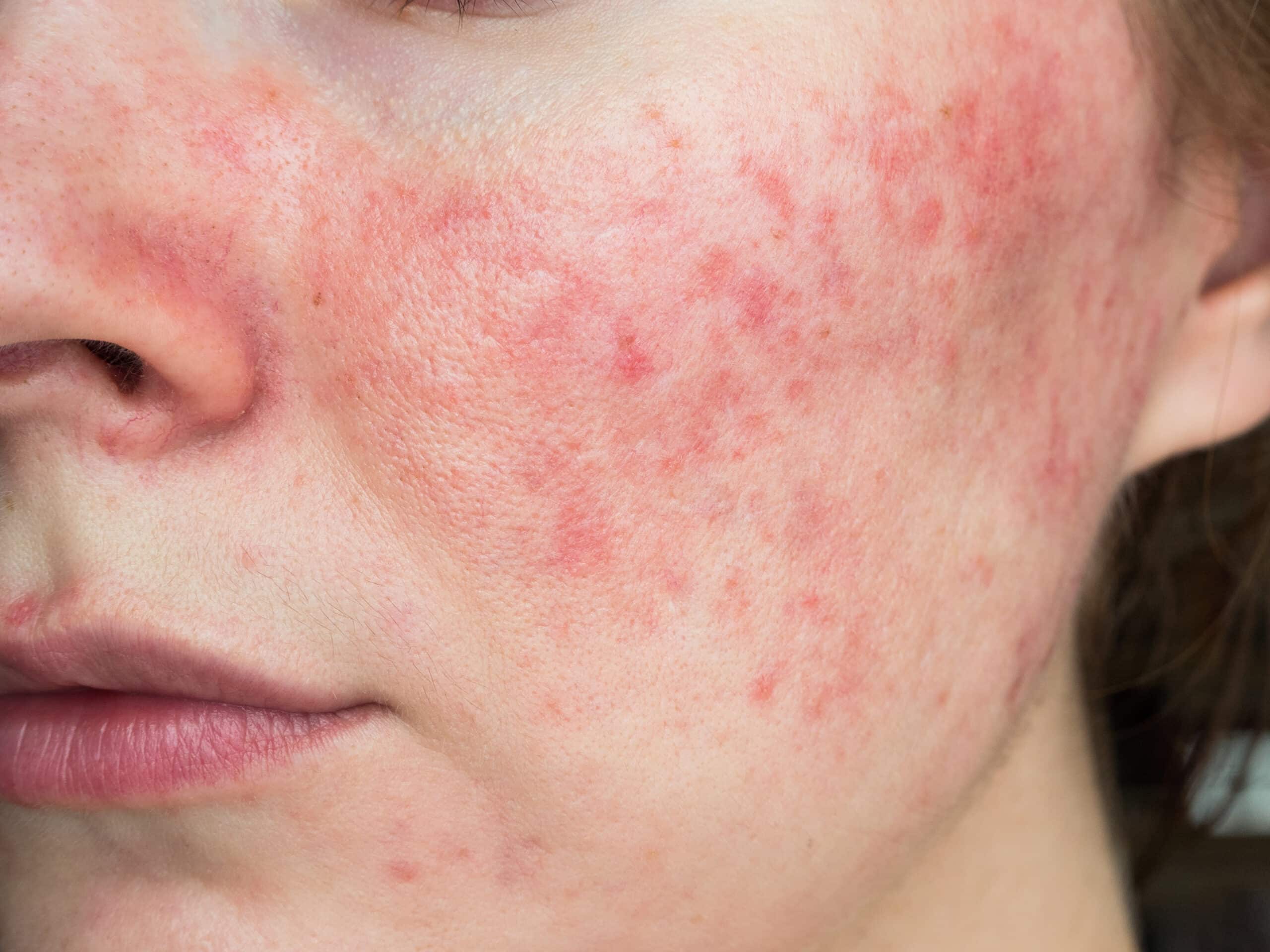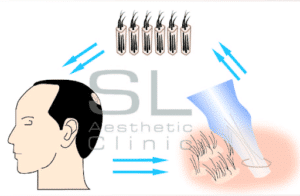
What are Demodex mites?
Demodex mites are microscopic organisms that inhabit the human skin. Two primary species are known to infest humans: Demodex folliculorum and Demodex brevis. These mites are a natural part of the skin’s microbiome and are commonly found in hair follicles.
Under normal circumstances, these mites coexist peacefully with humans, causing no harm. However, an overabundance of Demodex mites may lead to various skin issues, including rosacea.
What causes Demodex mites to manifest on the skin?
Almost everyone has demodex mites living on their skin, particularly areas like the cheeks, eyelashes and forehead. However, they can grow in excessive amounts due to:
- Excessive sebum production: Demodex mites feed on oils and sebum produced by the skin’s sebaceous glands. An overproduction of sebum can create a conducive environment for growth and proliferation of these mites.
- Compromised immune system: A weakened immune system may be less effective in keeping the Demodex mite population in check. Individuals with compromised immune functions may be more susceptible to an overgrowth of these mites.
- Poor hygiene: While Demodex mites are a natural part of the skin’s microbiome, poor hygiene practices can contribute to an increased population. Regular cleansing helps maintain a healthy balance and reduces the risk of mite overgrowth.
Environmental factors: Hot and humid weather can create an ideal habitat for Demodex mites, which thrive in these conditions and may increase their presence on the skin.
Symptoms of Demodex mites
- Itching: One of the most prevalent symptoms is itching, especially in areas where Demodex mites are most active. The itching sensation can be persistent and may lead to discomfort.
- Redness: Infestations can cause redness on the skin, often resembling a mild rash. This redness may be localised to areas where Demodex mites are more concentrated.
- Scaling or flaking: In some cases, Demodex mite infestations may lead to skin dryness, scaling, or flaking, making skin appear uneven.
- Papules and pustules: Small, red or pus-filled bumps may develop, resembling acne.
- Hair and eyelash issues: Demodex mites are commonly found in hair follicles, affecting the scalp and eyelashes. Symptoms may include dandruff or eyelash discomfort.
- Crawling sensation: Some individuals may experience a crawling sensation on the lashes and lids. This sensation is often attributed to the movement of Demodex mites on or beneath the skin’s surface.
These symptoms can overlap with various skin conditions, and a definitive diagnosis often requires a specialist’s evaluation.
How Demodex mites contribute to rosacea
Demodex mites are linked to rosacea by impacting the skin’s immune response. These mites live in hair follicles and sebaceous glands, feeding on sebum and skin cells. Their presence can trigger an inflammatory response in the skin, which may worsen rosacea symptoms such as redness, swelling, and the appearance of blood vessels.
Demodex mites also produce waste as they feed and move on the skin. The accumulation of these waste products may further irritate the skin and worsen the redness and inflammation.
Demodex mites rosacea treatment

At SL Aesthetic Clinic, we treat Demodex-related rosacea by reducing Demodex mites activity and performing Rosacea laser treatment. Here are the steps of the treatment.
Clarifying lotion
A topical treatment will help reduce demodex mite populations on the skin. A clarifying lotion containing ingredients like tea tree oil or benzoyl peroxide is effective against Demodex mites.
Scalp treatment
Demodex mites can also inhabit the scalp. We will use specially formulated shampoos and treatments targeting the scalp, which can aid in managing Demodex mites in this area.
Rosacea laser treatment
Rosacea laser is performed using a long-pulsed Nd:YAG laser machine. When done regularly, rosacea laser helps to control the demodex mite population, controls sebum production, and regulates the follicular units where inflammation usually occurs. Our rosacea laser also helps decrease the appearance of visible blood vessels, which is another common symptom of rosacea.
Also Read: Best Rosacea Treatment In Singapore
Maintenance therapy
Ivermectin cream (brand name Soolantra), will be prescribed to keep the demodex mite population under control. This cream is to be applied once daily. Together with regular laser treatments, this helps to maintain long-term control of rosacea.
Demodex Mites Treatment for Rosacea in Singapore
Understanding the relationship between Demodex mites and rosacea is critical for effective management. Learning its symptoms and how to treat it can empower you to take control of your skin health.
SL Aesthetic Clinic provides effective treatments for Demodex mite-associated rosacea. Our dedicated approach aims to address this condition’s root causes and symptoms, tailoring solutions for you.
FAQ
Demodex-related rosacea is marked by dryness, follicular scaling, and superficial vesicles and pustules. An experienced doctor may be able to diagnose it on the first visit. If in doubt, we can perform tests to check for the presence of demodex mites.
Natural solutions such as tea tree oil, neem oil, and honey have antimicrobial properties that may help control Demodex mite populations.
Some individuals may experience a crawling sensation on the skin when Demodex mite activity is heightened. This sensation is often accompanied by itching.
Excessive oil production on the skin and compromised immune function can attract Demodex mites. Maintaining good hygiene practices and a healthy immune system may help prevent infestations.
In some cases, Demodex mite populations may decrease on their own. However, targeted treatments are often necessary to manage and prevent flare-ups.
Poor hygiene, weakened immune systems, and hormonal changes can cause an overgrowth of demodex mites, worsening associated symptoms.
Like what you read? Share them!



